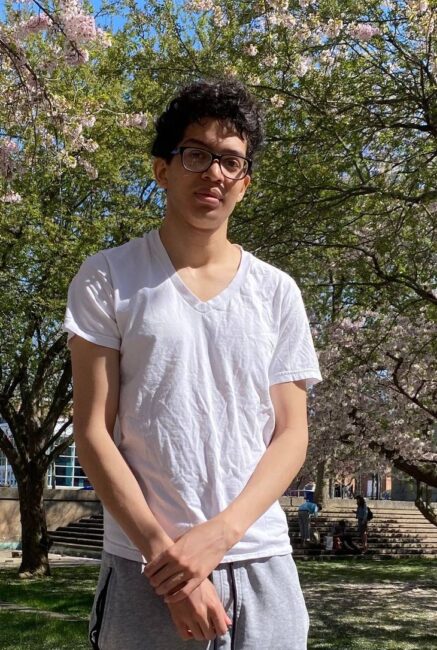Geordan Dorsey, a Fisk physics graduate student who uses VINSE facilities to take measurements.
Gallium Oxide has been of particular interest in the last few decades due to its outstanding optoelectronic properties. The most important of these is its ultra-wide band gap of 4.8 eV, making it an attractive semiconductor for applications in solar-blind UV detectors, gas sensors, and high-power electronics, such as those used in satellite communication or defense systems. Gallium Oxide is highly anisotropic, possessing different electrical and thermal conductivity levels when tested along different crystallographic directions. It has six different phases, each with different crystal structure, which naturally occur when gallium oxide forms. The beta phase (β) is the most stable at standard temperature and pressure, and thus is the most common phase gallium oxide is found in. Nanostructures have enhanced aspect ratio – the relationship between volume and surface area. Surface area dictates how much a material will react with light or gas, so nanowires of a given material will generally have improved optical and electrical properties. My project aims to bring the material gallium oxide together with the benefits of nanostructures to intensely study their growth conditions. In the Collins labs at Fisk University, I work alongside Dr. Ueda to test different types of crystal substrates, on which we grow gallium oxide nanowires via the Vapor-Liquid-Solid (VLS) method. These substrates are typically some type of silicon oxide, which are then deposited with a thin layer of a metallic element, sometimes with a thicker layer of another oxide as a seed layer sandwiched between. Each layer is annealed to enhance crystallinity. The goal is to find an ideal substrate and catalyst to grow highly oriented nanowires, with qualities enhanced past what has already been established in literature. The growth chamber geometry used in the Collins lab has been proven to grow nanowires in very short time spans, allowing for quick iteration through experimental parameter space.
I joined VINSE in order to get training on instruments such as the Scanning Electron Microscope, Energy-dispersive X-ray Spectroscopy, and Transmission Electron Microscopy. The fast iterations allowed by my experimental setup are greatly complimented by how easy and convenient it has been characterizing the structure of these nanowires via these microscopy techniques. I received excellent training from James McBride, he is extremely knowledgeable in microscopy techniques, provides clear but concise explanations on the mechanisms of the instruments, and is generally very enjoyable to learn from. Occasionally, I run into other students who are members of VINSE while using these machines, and so far have only been met with friendliness and positivity. I also had the pleasure of attending Nano-Day last year, which was a lot of fun, I got to see some great posters, listen to some great talks on cutting edge nanoscience research, and the food was great too! I will definitely continue to utilize the resources at VINSE throughout finishing my M.S. thesis.
When not at lectures or in the lab, I enjoy exercising, reading, and origami. I mentor undergraduate students at Fisk in materials science research, training them in experimental techniques, advising them on how to find academic success, managing time well, and aiding them in professional development. I am also a member of the National Society of Black Physicists (NSBP) and will be attending the annual conference this year in Knoxville, so if you see me there, feel free to say hello!
Contact: Geordan Dorsey
